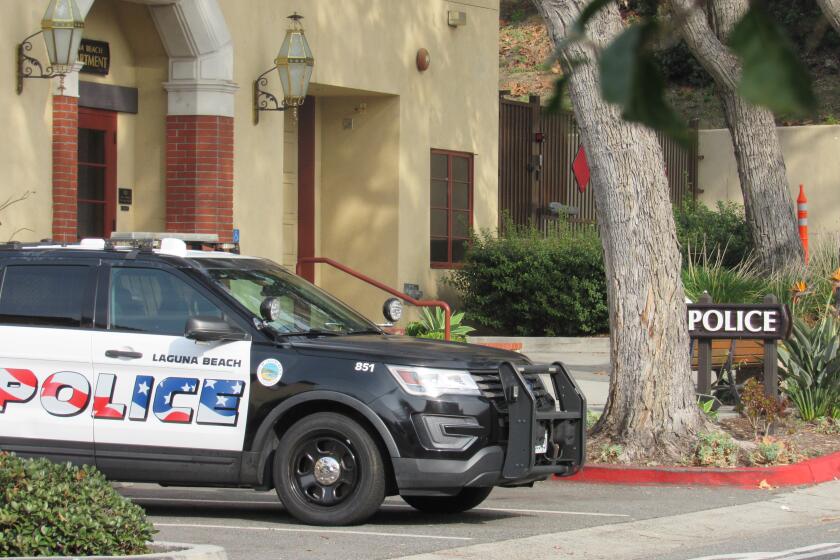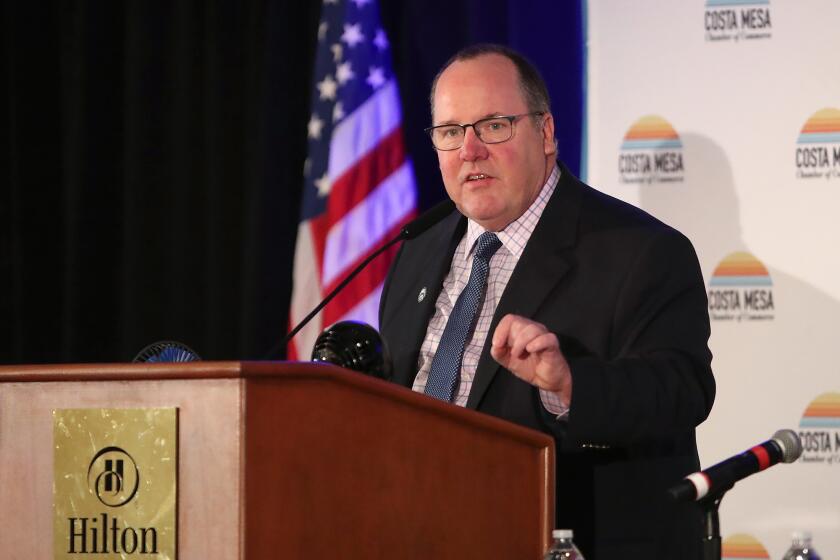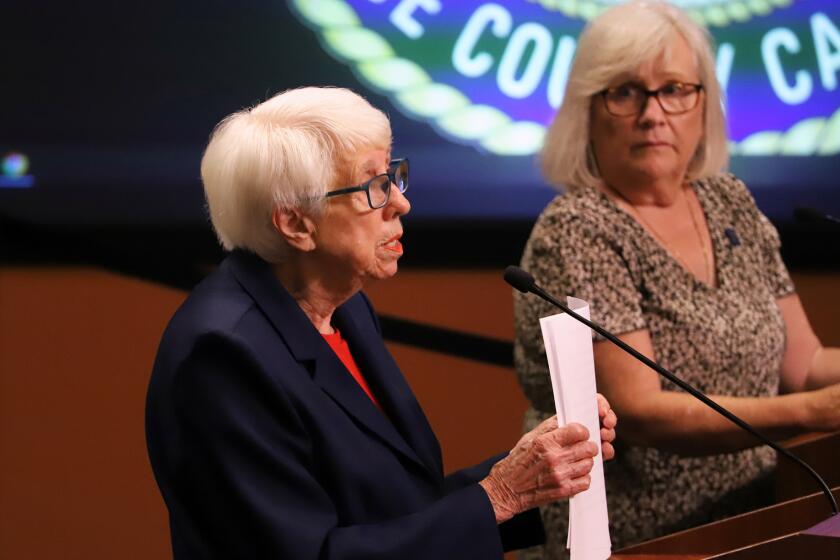Next round of Newport Harbor dredging could be a couple years out
Maintenance requires patience in Newport Harbor.
Nearly five years after its last major dredging project, the city of Newport Beach is planning its next big sediment removal. Ideally, the comprehensive dredge would begin within the next couple of years, said Harbor Resources Manager Chris Miller.
The City Council gave the go-ahead this week to start sediment testing, a process that will let city staff know what’s lurking in the muck and identify available disposal or placement options. Ideally, city officials say, it will also speed up the administrative hurdles of working with the federal government, which has a major hand in harbor dredging projects.
Dredging also requires money, however. Lots of it.
The last major harbor dredge, completed in 2013, removed about 600,000 cubic yards of silt at a cost about $7 million.
But, even with that budget, the project had financial constraints and limited disposal opportunities, leaving the project incomplete, Miller said.
“Dredging is expensive,” he said. “Just to get the dredging equipment here was $1.7 million.”
This upcoming project’s costs are unclear, but it will probably cost more than it did in 2013, with more material on the to-be-removed list and much of the remaining sediment being inappropriate for open-ocean disposal, Miller said.
Most of the harbor silt from the last cleanup was deposited in the open ocean a few miles offshore, but silt that is unsuitable for the open ocean costs more to relocate.
The last dredge restored harbor depths to 10 to 16 feet in most spots — about what they should be for water quality and to prevent boats from running aground, according to federal definitions. That project was years in the making, with sediment testing starting in 2005.
The U.S. Army Corps of Engineers maintains the federally authorized “design depths,” or water depths that the government holds itself to, in the harbor’s navigational channels. Design depths around the harbor range from 10 to 20 feet.
Some parts, like the channels around Balboa Island, are at or near the design depths. But other areas, including the anchorage area east of Lido Isle, have buildup that could be about three feet deep in some patches and more than five feet deep in others, giving mariners who should have 15 feet of water to work with having only 10 feet or less.
These were basically the areas left untreated in the last dredge, Miller said.
Most of the material pulled out in the last dredge was deposited in an Environmental Protection Agency-designated site about 4.5 miles offshore, although about 120,000 cubic yards of material deemed unfit for open-ocean disposal was sent to the Port of Long Beach as landfill.
Miller said Newport got lucky having the Long Beach option last time.
Long Beach, and the Port of Los Angeles, don’t currently have any fill needs.
Marine engineering firm Anchor QEA, which has an established relationship with the city and is familiar with its dredging protocols, was awarded the $422,200 sediment testing contract.
Testing work should begin around the first of the year.
A complete sediment analysis could prompt the Army Corps of Engineers to start work on a dredge design plan, Miller said. City staff has already been working for the past year to get on the federal government’s funding radar for 2019.
Ideally, the city would have a continuous preventative maintenance dredging schedule so the backlog doesn’t reach 600,000 cubic yards or more, Miller said. It’s akin to routine road maintenance that staves off deep potholes, Miller said.
Mayor Pro Tem Marshall “Duffy” Duffield, a harbor champion, said the city is working on comprehensive dredging reform that steadily keeps up on sediment in all of Newport’s waterways, including the Back Bay, the main harbor, and under the private docks and marinas.
“We’re into this like painting the Brooklyn Bridge,” he said. “It’s never done.”
Other recent Newport dredges include a 2011 cleanup of the Rhine Channel — which also sent a load of sediment to Long Beach — and a 2010 project in the Back Bay.
Twitter: @Daily_PilotHD
All the latest on Orange County from Orange County.
Get our free TimesOC newsletter.
You may occasionally receive promotional content from the Daily Pilot.




